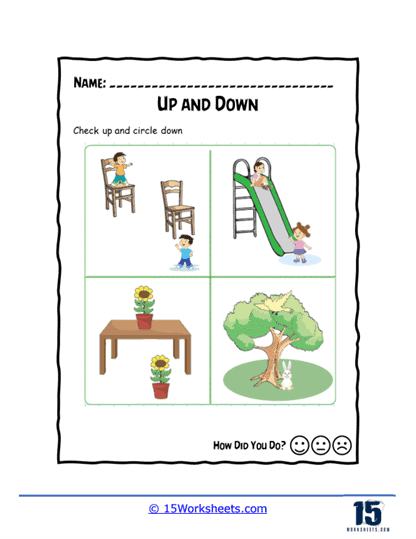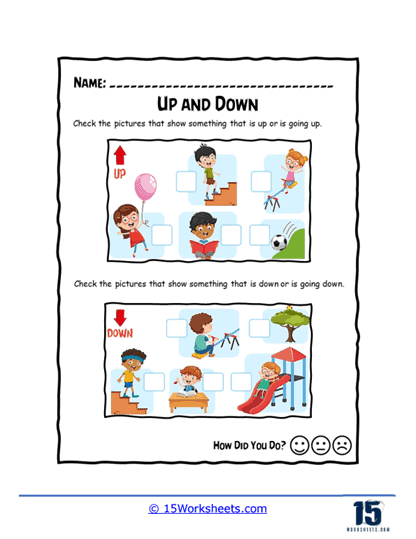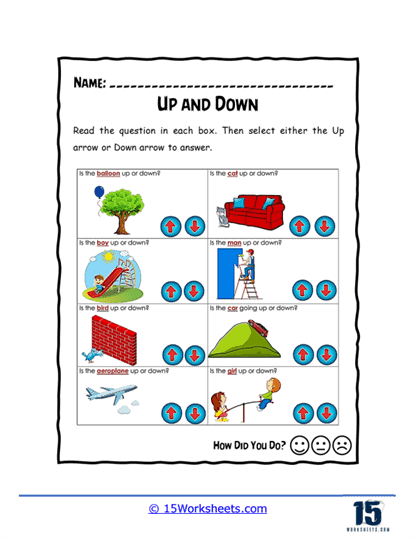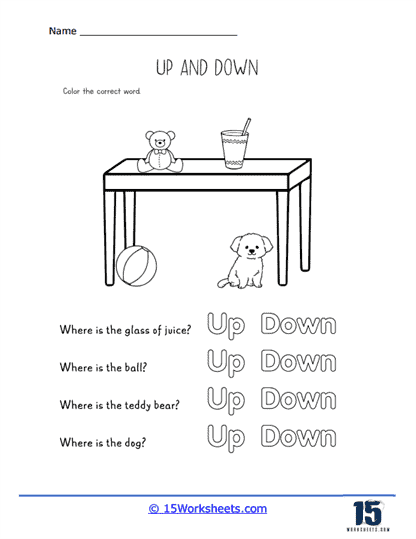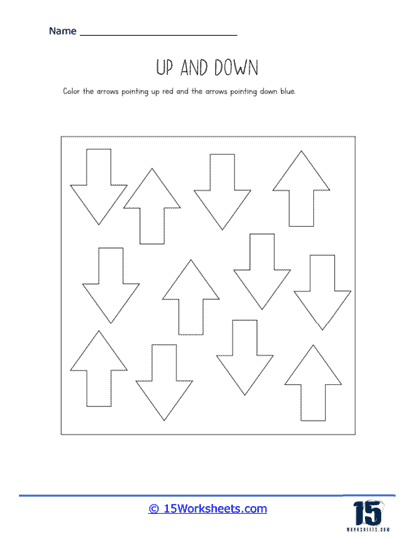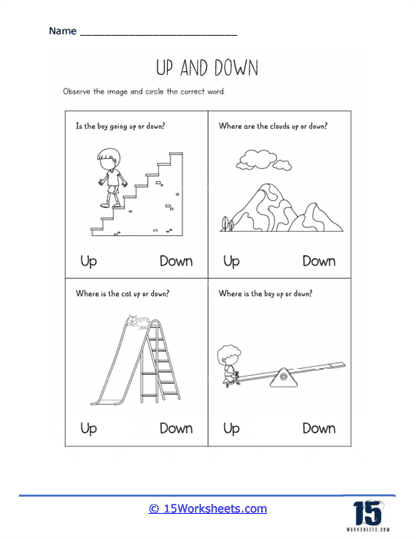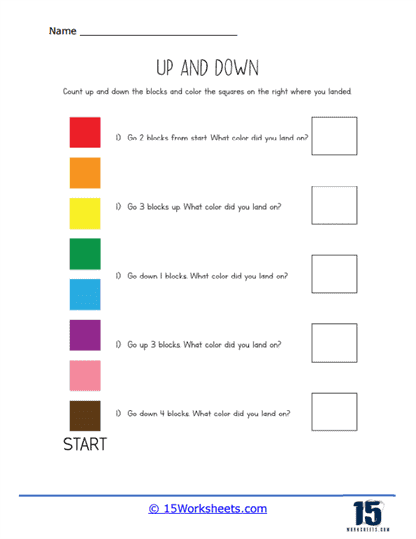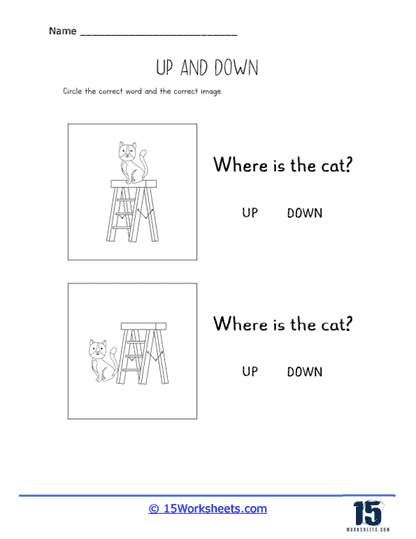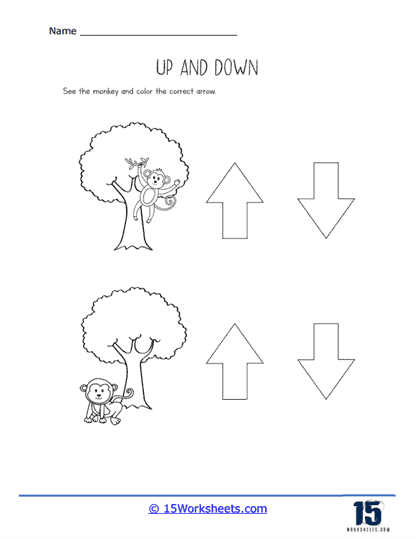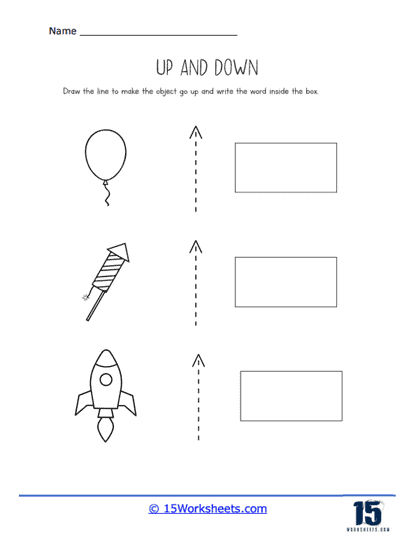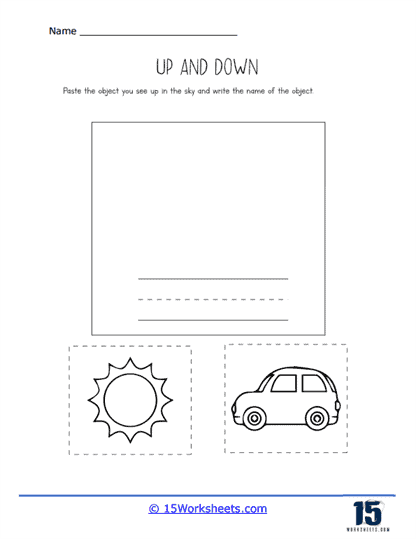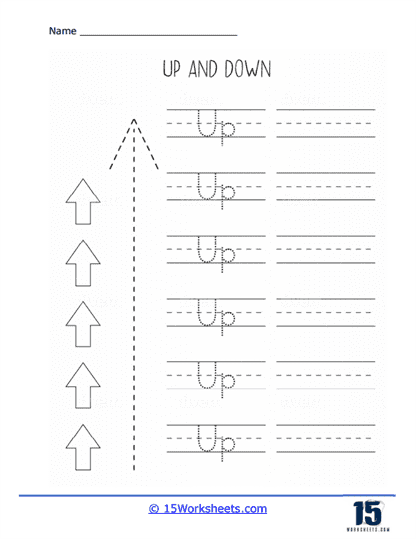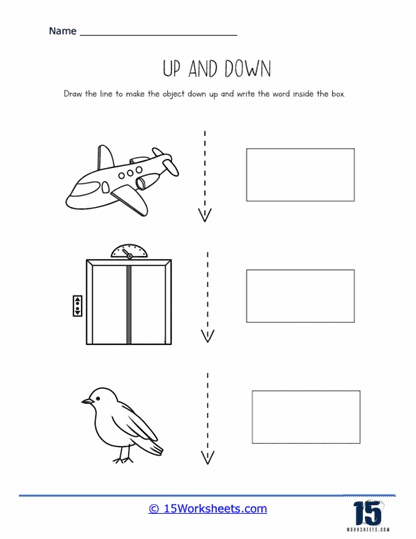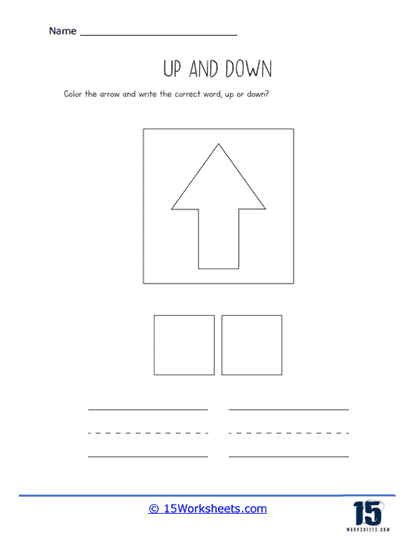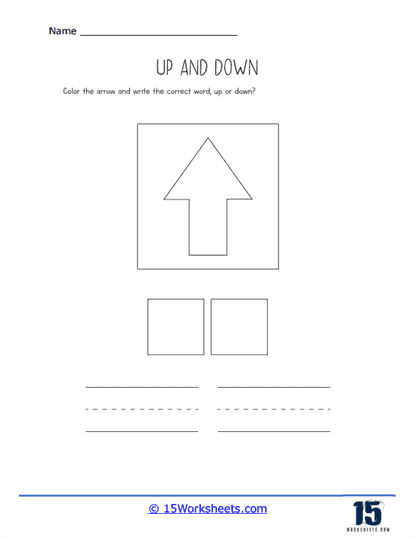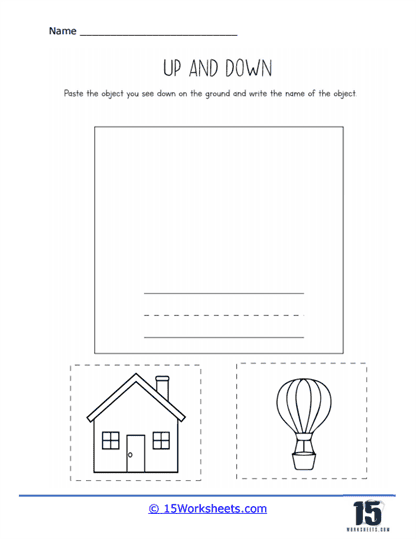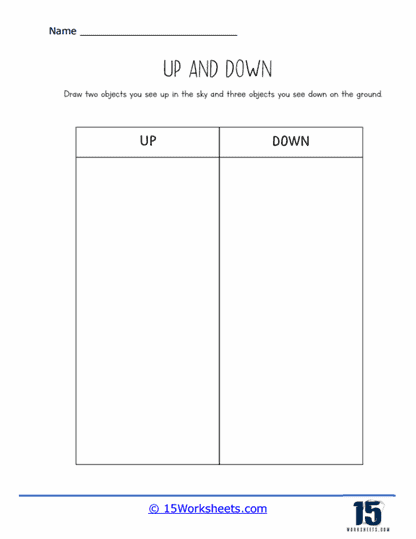Up or Down Worksheets
About These 15 Worksheets
These worksheets will help children grasp spatial concepts. These terms are direction-based prepositions that describe the position or movement of an object relative to another or the observer. For youngsters understanding the concepts of “up” and “down” is an important part of their ability to interact with and describe the world around them. These terms lay the groundwork for more advanced concepts in physics, geometry, and other fields.
In these worksheets, you’ll typically see pictures or illustrations where certain objects or characters are placed higher or lower relative to others, or moving in an upward or downward direction. The task for the child then is to identify, label, or circle the objects based on their position or direction.
For instance, a worksheet might show a picture of balloons floating “up” and apples falling “down”. The child might be asked to color the items that are moving “up” or to draw a line to the objects going “down”.
Other examples might include ladders or stairs, where a character might be going “up” or “down”. The child could be asked to label or point out who is going up and who is going down.
How To Teach This Concept
Teaching the concepts of “up” and “down” to children is crucial for their spatial and cognitive development. It helps them understand their environment, follow directions, and communicate effectively. Here’s a comprehensive guide on how to successfully teach these fundamental concepts:
1. Demonstration – Start by demonstrating what “up” and “down” mean. You can use real-life objects like balls, toys, or even use yourself as an example. Jump “up” and sit “down”, or move a toy “up” a staircase and “down” a slide, clearly explaining what you’re doing. This way, children can visually associate these concepts with physical actions.
2. Interactive Play – Encourage the child to actively explore these concepts through play. Simple games like throwing a ball “up” in the air and letting it drop “down”, or bouncing “up” and “down” on a trampoline can make learning fun and engaging. It can also enhance their motor skills.
3. Storytelling and Picture Books – Picture books are an excellent resource to teach these concepts. Stories about birds flying “up” into the sky or rain falling “down” from clouds can capture a child’s interest. While reading, emphasize the terms “up” and “down” and encourage the child to spot characters or objects that are moving or located “up” or “down”.
4. Everyday Conversations – Incorporate these terms into your daily routines and conversations. For example, when going up or down an elevator or stairs, point out that you’re moving “up” towards the higher floors or “down” towards the ground floor. Similarly, during meal times, talk about lifting a spoon “up” to the mouth and putting it “down” on the table.
5. Arts and Crafts – Get the child involved in creative activities. They could paint a picture with the sun “up” in the sky and roots “down” in the ground. Craft activities provide a creative and tactile experience that can reinforce their understanding of the concepts.
6. Worksheets – Our worksheets can provide a structured way for children to practice these concepts. The worksheets might involve coloring, drawing, or connecting items that are moving “up” or “down”. This not only reinforces the concepts but also helps improve fine motor skills.
7. Songs and Rhymes – Use songs, nursery rhymes, or finger plays that incorporate the concepts of “up” and “down”. Children can enjoy the rhythm and melody while learning the concepts. For instance, the classic nursery rhyme “Jack and Jill went up the hill” is a fun way to introduce these concepts.
8. Real-Life Scenarios – Use the natural environment to teach these concepts. For instance, when you’re outside, point out that birds fly “up” in the sky, and apples fall “down” from trees. Making these real-life connections can help children understand and remember the concepts better.
Teaching the spatial concepts requires patience, repetition, and engaging activities. Children learn at their own pace, and it’s important to provide a supportive and positive environment for learning. By making the learning process enjoyable, varied, and relatable to everyday life, these concepts will soon become a natural part of a child’s understanding of the world.



